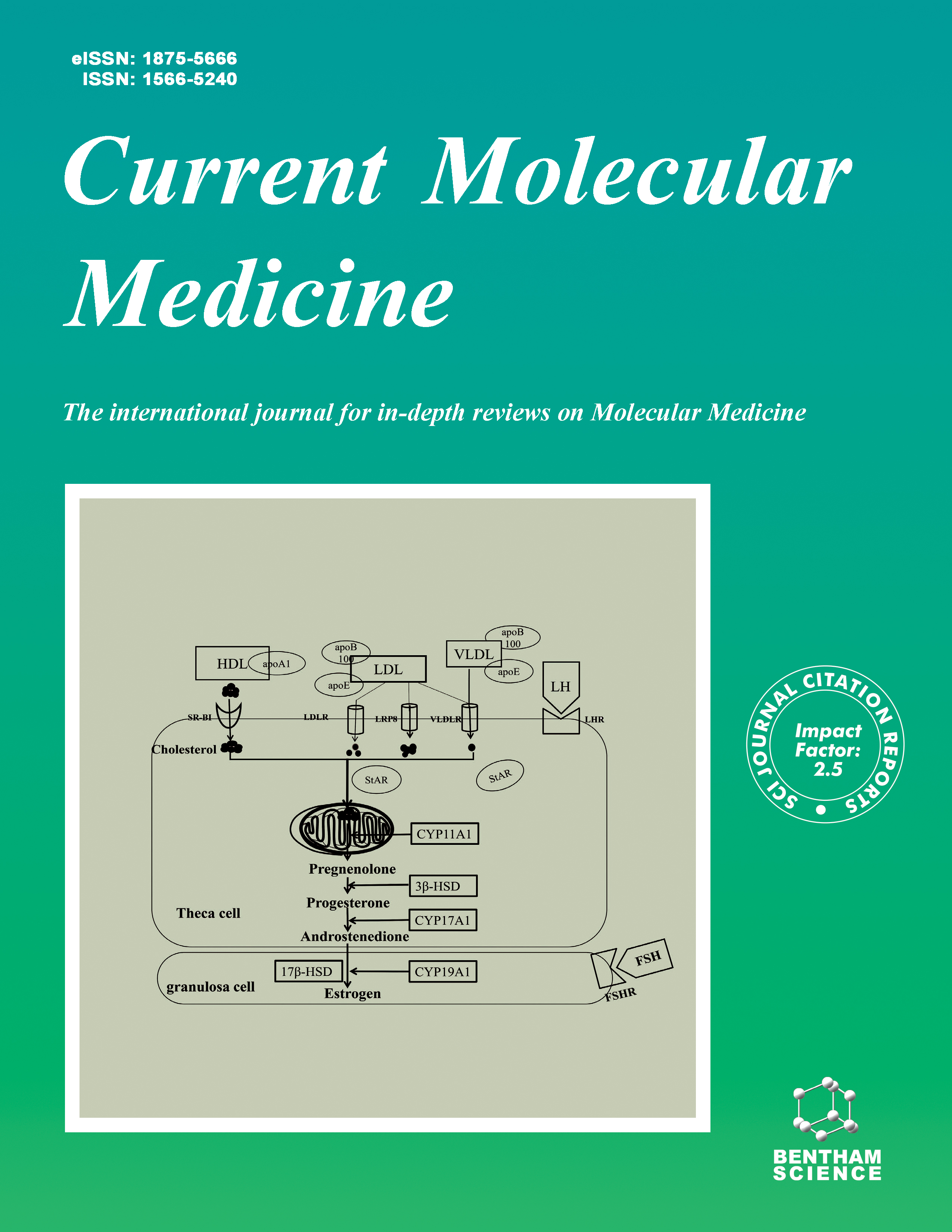- Home
- A-Z Publications
- Current Molecular Medicine
- Previous Issues
- Volume 1, Issue 2, 2001
Current Molecular Medicine - Volume 1, Issue 2, 2001
Volume 1, Issue 2, 2001
-
-
Measles Virus Induced Immunosuppression: Targets and Effector Mechanisms
More LessAuthors: S. Schneider-Schaulies, S. Niewiesk, J. Schneider-Schaulies and V.T. MeulenA profound, transient suppression of immune functions during and after the acute infection is the major cause of more than one million cases of infant deaths associated with measles worldwide. Concommittant with the generation of an efficient measles virus (MV) specific immunity, immune responses towards other pathogens are strongly impaired and provide the basis for the establishment and severe course of opportunisti Read More
-
-
-
The Molecular Pathogenesis and Experimental Therapy of IgA Nephropathy Recent Advances and Future Directions.
More LessIn 1968 Berger and Hinglais published the first description of IgA nephropathy (IgAN). In the ensuing 30 years, extensive clinical, epidemiologic, and immunologic characterizations of primary (idiopathic) glomerulonephritis with IgA as the predominant or co-dominant immunoglobulin deposited in the mesangia of all glomeruli, have established the features of IgAN as a distinct glomerular disease entity. Despite these efforts, the ba Read More
-
-
-
Molecular Mechanisms of Thiamine Utilization.
More LessAuthors: C.K. Singleton. and P.R. MartinThiamine is required for all tissues and is found in high concentrations in skeletal muscle, heart, liver, kidneys and brain. A state of severe depletion is seen in patients on a strict thiamine-deficient diet in 18 days, but the most common cause of thiamine deficiency in affluent countries is alcoholism. Thiamine diphosphate is the active form of thiamine, and it serves as a cofactor for several enzymes involved primarily in ca Read More
-
-
-
Macrophage Response to Mycobacterium tuberculosis During HIV Infection Relationships Between Macrophage Activation and Apoptosis.
More LessAuthors: F. Mariani, D. Goletti, A. Ciaramella, A. Martino, V. Colizzi and M. FrazianoHuman macrophages represent the first line of defense for the containment of Mycobacterium tuberculosis infection. After phagocytosis, macrophages express activation surface markers and produce proinflammatory cytokines and chemokines whose main role is to control pathogen spreading by recruiting peripheral lymphocytes and monocytes at the site of inflammation. However, in the case of a concomitant huma Read More
-
-
-
DNA Vaccines.
More LessAuthors: A. Reyes-Sandoval and H.C.J. ErtlWithin the last decade bacterial plasmids encoding foreign antigens have revolutionized vaccine design. Although no DNA vaccine has yet been approved for routine human or veterinary use, the potential of this vaccine modality has been demonstrated in experimental animal models. Plasmid DNA vaccination has shown efficacy against viral, bacterial and parasitic infections, modulated the effects of autoimmune and a Read More
-
-
-
Adeno-Associated Virus (AAV) as a Vehicle for Therapeutic Gene Delivery Improvements in Vector Design and Viral Production Enhance Potential to Prolong Graft Survival in Pancreatic Islet Cell Transplantation for the Reversal of Type 1 Diabetes.
More LessAuthors: M.H. Kapturczak, T. Flotte and M.A. AtkinsonMost viral gene delivery systems utilized to date have demonstrated significant limitations in practicality and safety due to the level and duration of recombinant transgene expression as well as their induction of host immunogenicity to vector proteins. Recombinant adeno-associated virus (rAAV) vectors appear to offer a vehicle for safe, long-term therapeutic gene transfer; factors afforded through the propensity of rAAV to estab Read More
-
-
-
Molecular Analysis of Primary Central Nervous System and Primary Intraocular Lymphomas.
More LessAuthors: N. Tuaillon and C.C. ChanPrimary central nervous system lymphoma (PCNSL) is usually a large B-cell, high grade non-Hodgkins lymphoma (NHL) classified as a diffuse large cell lymphoma (DLCL). In rare cases, however, T cell lymphomas have been described. Although a relatively rare tumor, the incidence of PCNSL has increased dramatically over the past 15 years in both immuno-competent and immuno-compromised patients. The disease is aggre Read More
-
-
-
Diabetes Mellitus-Cell Transplantation and Gene Therapy Approaches.
More LessAuthors: T. Halvorsen and F. LevineDiabetes mellitus affects millions of people in the United States and worldwide. It has become clear over the past decade that the chronic complications of diabetes result from lack of proper blood glucose concentration regulation, and particularly the toxic effects of chronic hyperglycemia on organs and tissues. Pancreas transplants can cure insulin-dependent diabetes mellitus (IDDM). Furthermore, recent a Read More
-
Volumes & issues
-
Volume 25 (2025)
-
Volume 24 (2024)
-
Volume 23 (2023)
-
Volume 22 (2022)
-
Volume 21 (2021)
-
Volume 20 (2020)
-
Volume 19 (2019)
-
Volume 18 (2018)
-
Volume 17 (2017)
-
Volume 16 (2016)
-
Volume 15 (2015)
-
Volume 14 (2014)
-
Volume 13 (2013)
-
Volume 12 (2012)
-
Volume 11 (2011)
-
Volume 10 (2010)
-
Volume 9 (2009)
-
Volume 8 (2008)
-
Volume 7 (2007)
-
Volume 6 (2006)
-
Volume 5 (2005)
-
Volume 4 (2004)
-
Volume 3 (2003)
-
Volume 2 (2002)
-
Volume 1 (2001)
Most Read This Month
Article
content/journals/cmm
Journal
10
5
false
en


